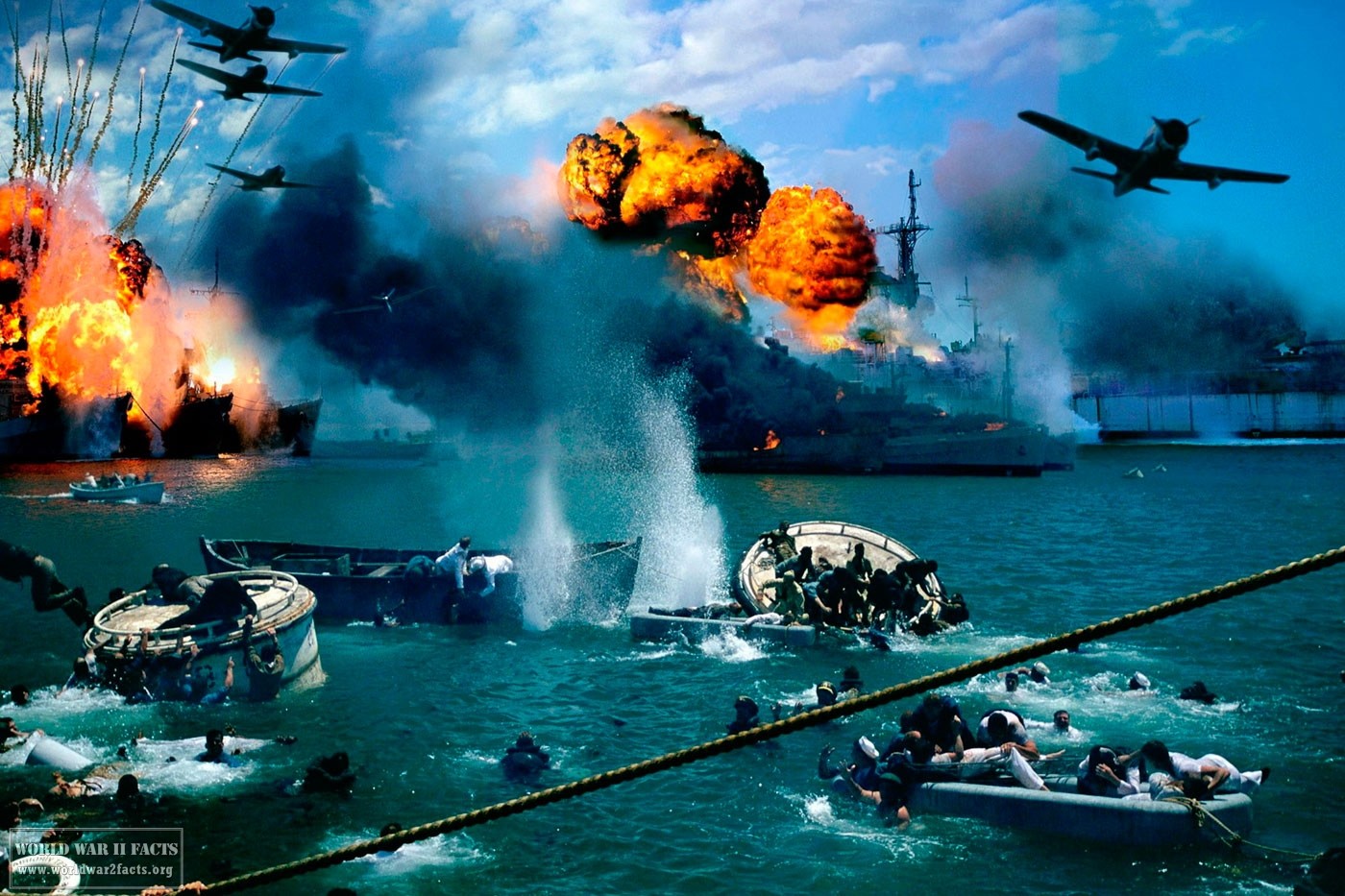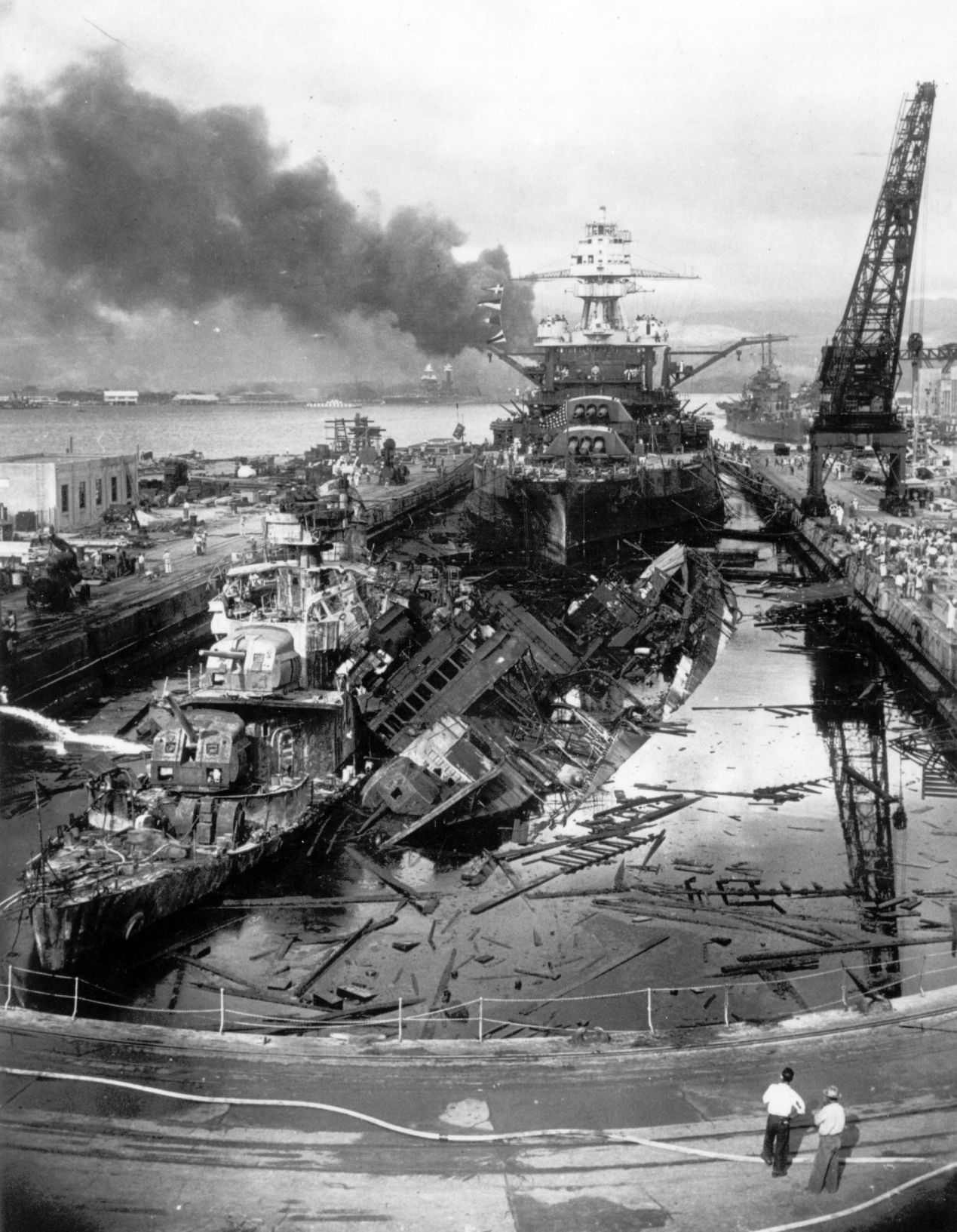
After bombs fell on Ford Island Naval Air Station, at the center of Pearl Harbor, Lt. Fuchida, the leader of the attack, reported the completion of the surprise attack by sending a radio message to the fleet: "Tora! Tora! Tora!" Translated from Japanese to English, the word means "Tiger," according to McWilliams.

aircraft and preventing them from taking off. These fighters also attacked airfields and barracks with machine-gun and cannon fire, disabling almost all U.S. The first wave included 43 fighter planes sent to protect the bombers and torpedo-bombers. Positioned 230 miles (370 kilometers) north of Oahu, the Japanese carrier fleet launched 185 aircraft, according to " Sunday in Hell Pearl Harbor Minute by Minute," by Bill McWilliams (Open Road Media, 2014). The attack on Pearl Harbor began at around 7:55 a.m local time when the first wave of Japanese aircraft reached their targets. (Image credit: US Navy/Interim Archives/Getty Images) Thick smoke billows up from American warships (from left, USS West Virginia and USS Tennessee) along Battleship Row during the Japanese attack on Pearl Harbor, on Dec. "The Americans failed to understand that the Japanese had a viable method to deliver a serious blow against the Pacific Fleet in Hawaii." Japanese war machines What happened at Pearl Harbor? The reasons behind this are many, but the primary one was a lack of understanding of what the Imperial Japanese Navy was capable of," Stille said. "Of course, the American level of preparedness was woefully inadequate. These ships included the USS Oklahoma, Maryland, West Virginia, Tennessee, Arizona and Nevada, as well as the USS California lying nearby and the USS Pennsylvania in Drydock 1 across the harbor.

Navy battleships moored along Battleship Row at the eastern end of Ford Island. The attack was planned in two waves of fighter and fighter-bomber aircraft, totaling 353 aircraft. They were escorted by an armada of 31 warships and support vessels. 26, 1941, under strict radio silence, the six aircraft carriers of the Japanese First Air Fleet - called Akagi, Kaga, Soryu, Hiryu, Shokaku and Zuikaku - departed home waters. Mitsuo Fuchida was chosen to command the air assault. Minoru Genda to formulate a plan of attack for the Imperial Japanese Navy (IJN), while Capt. – 'Ghost Army' in WWII used inflatable tanks to fool the Nazis and win the war – VE Day: The end of World War II in Europe – Mayday! 17 mysterious shipwrecks you can see on Google Earth Apparently, he actually believed that the loss of several battleships would shock the Americans into making peace," Stille said. Without Isoroku’s vision and determination to pull off the attack, it would never have occurred. "There is only one reason why the Japanese attacked Pearl Harbor: because Yamamoto Isoroku thought it would be a good idea. Wood's book " Japanese Military Strategy in the Pacific War" (Rowman & Littlefield, 2007). When considering a possible war with the U.S., Yamamoto remarked: "If I am told to fight, regardless of the consequences, I shall run wild for the first six months or a year, but I have utterly no confidence for the second or third year," according to James B. He had also been posted to the Japanese Embassy in Washington, D.C., in the 1920s. Yamamoto was a naval aviator and had studied at Harvard University. The attack on Pearl Harbor was planned by Admiral Isoroku Yamamoto, commander in chief of the Combined Fleet. (Image credit: Roger Viollet via Getty Images) Japanese aviators can be seen some time before the bombing of Pearl Harbor, in December 1941. Their interest was in expanding to Southeast Asia and removing the Western powers," Robert Cribb, professor of Political and Social Change at Australian National University, told All About History in 2015. "For Japan, Pearl Harbor was really the sideshow – they were trying to get rid of the US fleet of ships and attempting to stop supplies to the British. "The Japanese chose to double down on aggression after being called to account for their expansionist policies." "In particular, Japanese low oil reserves meant that action had to be taken before the Imperial Navy was crippled through lack of fuel," Stille told Live Science. This caused huge damage to the Japanese economy. In 1940, Japanese forces occupied French Indochina (modern-day Vietnam), and the U.S., Britain and its allies responded by placing a trade embargo on Japan. relations with both nations, according to the U.S.

Japan had been at war with China since 1937, which affected U.S.


 0 kommentar(er)
0 kommentar(er)
